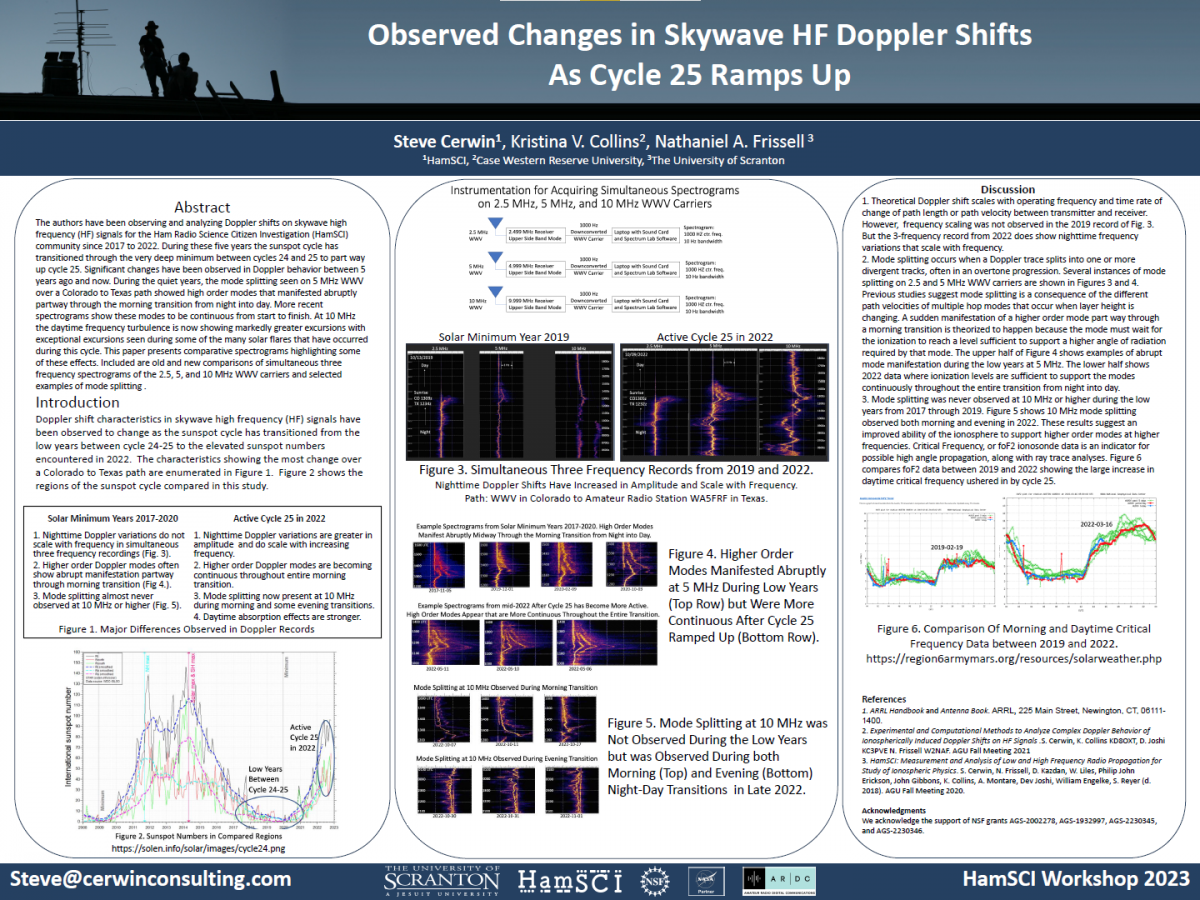| Title | Time Difference of Arrival (TDOA) Measurements on Multipath Propagation Modes to Profile Ionospheric Layer Height Changes During Solar Eclipses |
| Publication Type | Conference Proceedings |
| Year of Conference | 2023 |
| Authors | Cerwin, SA |
| Conference Name | HamSCI Workshop 2023 |
| Date Published | 03/2023 |
| Publisher | HamSCI |
| Conference Location | Scranton, PA |
| Abstract | A science objective for the 2023 and 2024 eclipses is to measure how HF propagation changes with eclipse passage. Two parameters of interest are the change in effective in F2 ionization layer height caused by the momentary blockage of solar radiation and the symmetry in recovery as solar radiation returns after eclipse passage. The changes in layer height that occurred during the 2017 eclipse and that occur daily at dawn and dusk have been studied by both Doppler analyses and, in the latter case more directly by Time-of-Flight (TOF) measurements. The WWV analyses were enabled by the station’s precise carrier frequency accuracy and by transmission of timing markers precisely synchronized to UTC. The objective of the proposed SEQP experiment is to acquire similar data from amateur radio stations using common amateur radio equipment and authorized frequencies. But most amateur radios possess neither the frequency stability for accurate Doppler analysis nor an easy way to time-synchronize for accurate TOF measurements. However, over propagation paths that support transmission of multiple hops, an audio chirp waveform can be transmitted to measure the Time Difference of Arrival (TDOA) between multipath modes, particularly the 1- and 2- hop modes. For a given TX-RX path, the arrival times for multiple hops from a common ionization layer are geometrically locked together by ground distance, layer height, and geometry. Therefore a 1-hop, 2-hop TDOA measurement could be used to infer effective layer height and track how it changes with time over the course of the eclipse. The method is like a conventional chirp radar technique but instead of the usual swept carrier an audio chirp is fed into the microphone input of a radio transmitter operating in voice mode. The TDOA approach eliminates the need for precise frequency and timing accuracy, allowing the use of simple amateur radio equipment. This paper presents the methodology proposed for use in the experiments, gives examples of TDOA measurements already performed using the scientific waveforms being transmitted at 8 and 48 minutes after the hour by WWV and WWVH, and discusses anticipated issues associated with the method. |
| Refereed Designation | Non-Refereed |
| Full Text |

